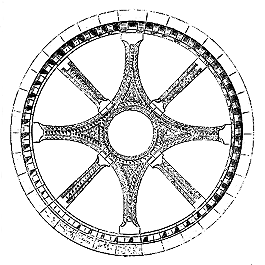Report of the session "Image", Campus Condorcet, 29 mai 2015
Archive: February 13, 2018
The International Medieval Society workshop of 29th May 2015, Image in Medieval Studies, was held at the Maison de la Recherche of Université Paris 3, Sorbonne Nouvelle and was introduced by Irène Fabry-Tehranchi (University of Reading) and Maud Pérez-Simon (Université Paris 3).
Henry Maguire of John Hopkins University focused on Byzantine religious art, particularly depictions of St Anne and the Immaculate Conception. Of especial interest was Maguire’s reference to the use of nature in such imagery, which was traditionally absent in portrayals of the conception of Jesus, due to the supernatural and unworldly nature of the event. The introduction of natural elements was exceptional, and in a similar way, the depiction of strong emotions, which would not have been deemed fit for sacred figures, was introduced with a different chronology in texts and images. Maguire referenced the work of Byzantine homilists and notably the Emperor Leo VI, explaining the superior significance of the conception of Jesus, as a miracle preceded by an earlier miracle.
The second speaker, Jean Wirth (University of Geneva), spoke on Roman and Gothic architecture at the end of the Middle Ages, emphasising the rhetoric of images and the use of similar rhetorical figures in text and images. This paper made especial note of the image of Christ and the Apostles at Ravenna, together with a portrayal of the Apostles at the Transfiguration, in which they are depicted as sheep. Through this study of image, Wirth demonstrated how the use of image can be more important to rhetoric than text itself. This was particularly illustrated through the observations on the way in which images could be juxtaposed as an example of equivalence, and the use of sirens within medieval religious art, thus using seduction as an aid to faith.
The final paper, given by Patrick Boucheron (Université Paris I), concentrated on the political use of narrative and language in art, in the late Middle Ages and in Italy. Boucheron showed an especial interest in the relationship between the scholastics and architecture and the later development of humanism. Boucheron spoke particularly of the importance of the public display of images and, like Wirth, commented on the significance of the link between image and language within the Middle Ages and early Renaissance.
The later discussion included a lively exchange between Jean Wirth and Jean-Claude Bonne.
Jennifer Markey, University of Bristol
This entry published by irenefabry.
